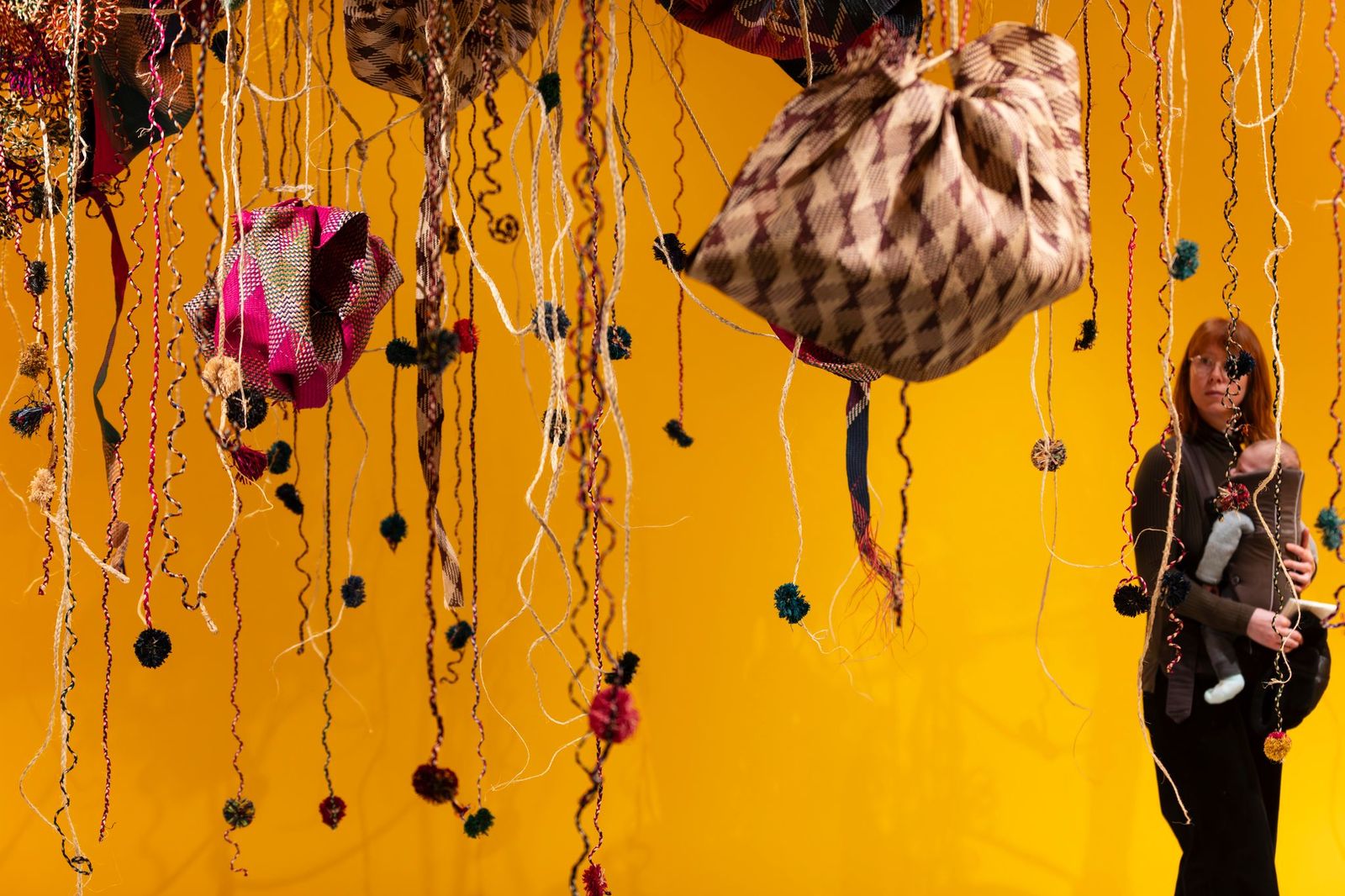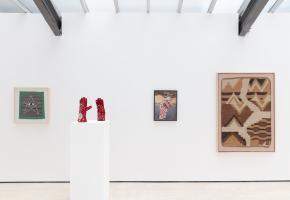After having been systematically underestimated as an art form, textiles are currently experiencing a kind of cultural spotlight. In interview with one of the exhibition’s curators Lotte Johnson, we discussed the way in which textiles have been “undervalued and marginalised within histories and hierarchies of Western art”, defined as “craft” in opposition to fine art and gendered as feminine in order to designate the medium inferior. In this sprawling collection of works, this long-standing dismissal is not only undermined by the mere existence of the exhibition, but an active effort is being made to question the structures which have deemed textiles unimportant.
The thoughtfulness of the curation shines through the whole viewing experience. The expansive idea of textiles and their power is explored not linearly or chronologically, but in a “porous and hybrid exhibition” (Johnson) facilitated by the openness and sheer size of the Barbican’s space. “We wanted to allow the work to provide the choreography of the exhibition… to guide you through the space”, Johnson explains, and it really does — the careful consideration behind the organisation of the pieces pays dividends. The influence of artists on one another’s practices, and the multitude of traditions and ideas connected to, based in and explored via textiles globally, provides a stimulating through-line as you traverse the rooms. “Textiles can be anything” (Johnson), and in this exhibition, they are everything.
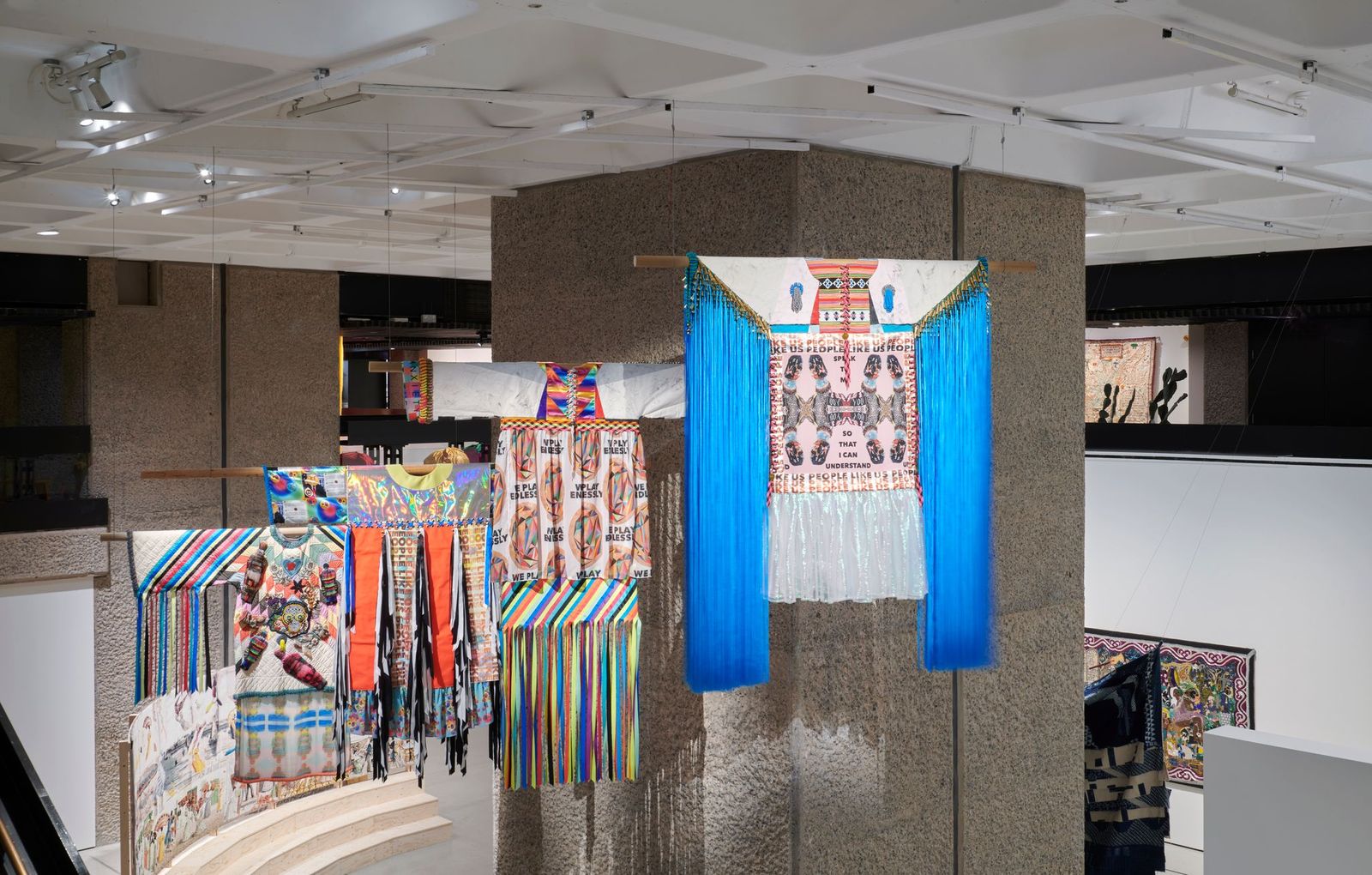
Opening on a section entitled “Subversive Stitch”, emphasis is placed throughout on the potential for political power that is so intrinsic to the medium. Displayed in this room are, among other things, works from Paraguayan visual artist Feliciano Centurión (also featured in Hecho a Mano at Cecilia Brunson). In one of his most famous and striking works, Centurión embroidered a red and green blanket with the simple phrase “estoy vivo!”. Simultaneously capturing a celebration of living and, in cruel irony, highlighting his understanding of the imminence of his death from AIDS, this work demonstrates the power of the simplicity of textiles in creating layered meaning. In queering a feminised art form, bucking “oppressive categorisation of mediums” (Johnson) and adorning objects of comfort with messages of pain — both feeling it and fighting it —, Centurión’s oeuvre is one of resistance and reclamation.
Later in the exhibition, Chilean artist Cecilia Vicuña’s towering installation Quipu Austral speaks to an equally potent but utterly distinct form of resistance and reclamation through textiles. The visual impact of the piece is immense, with bright streams of fabric stretching from floor to ceiling in the cavernous Barbican lower gallery. Banned and ordered to be destroyed during the Spanish conquest of Chile in the 16th century, the ancient Andean Quipus — knots — that she has made in this work are an “act of poetic resistance” (Johnson) not only against colonialism, but also against the military coup and the right-wing dictatorship of the 1970s. Vicuña herself describes her work as “a poem of space”.
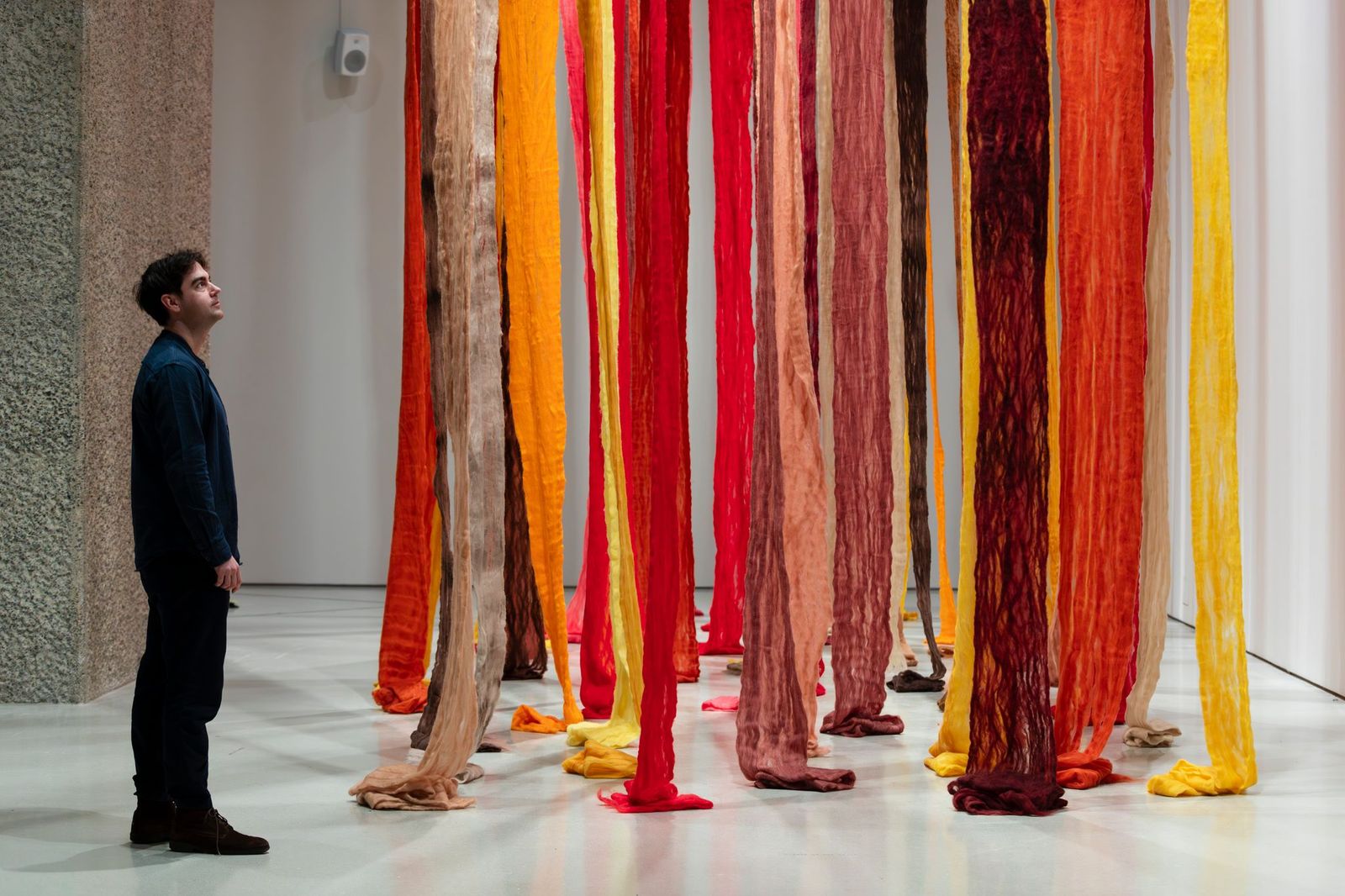
The understanding that "you can access the work on so many levels” (Johnson), though, is one that is perhaps required to do a little too much legwork. Moving through the exhibition, I had numerous interactions with viewers about just how tiny the font was, and how many had given up on reading the abstracts because they had to be standing just centimetres away from the walls to see it. This may sound like a petty gripe, but beyond being an accessibility issue — there are large print guides available, but they are limited, and the text is so tiny that only a couple of people can stand with it in focus at once —, this feels like a real blow to the content of the exhibition. The visual appeal can in many cases stand alone — pretty art is pretty art — but in so many cases, the works are enhanced by delving into their creation, their message, their context. The abstracts were thought-provoking and detailed, if only you could get to them.
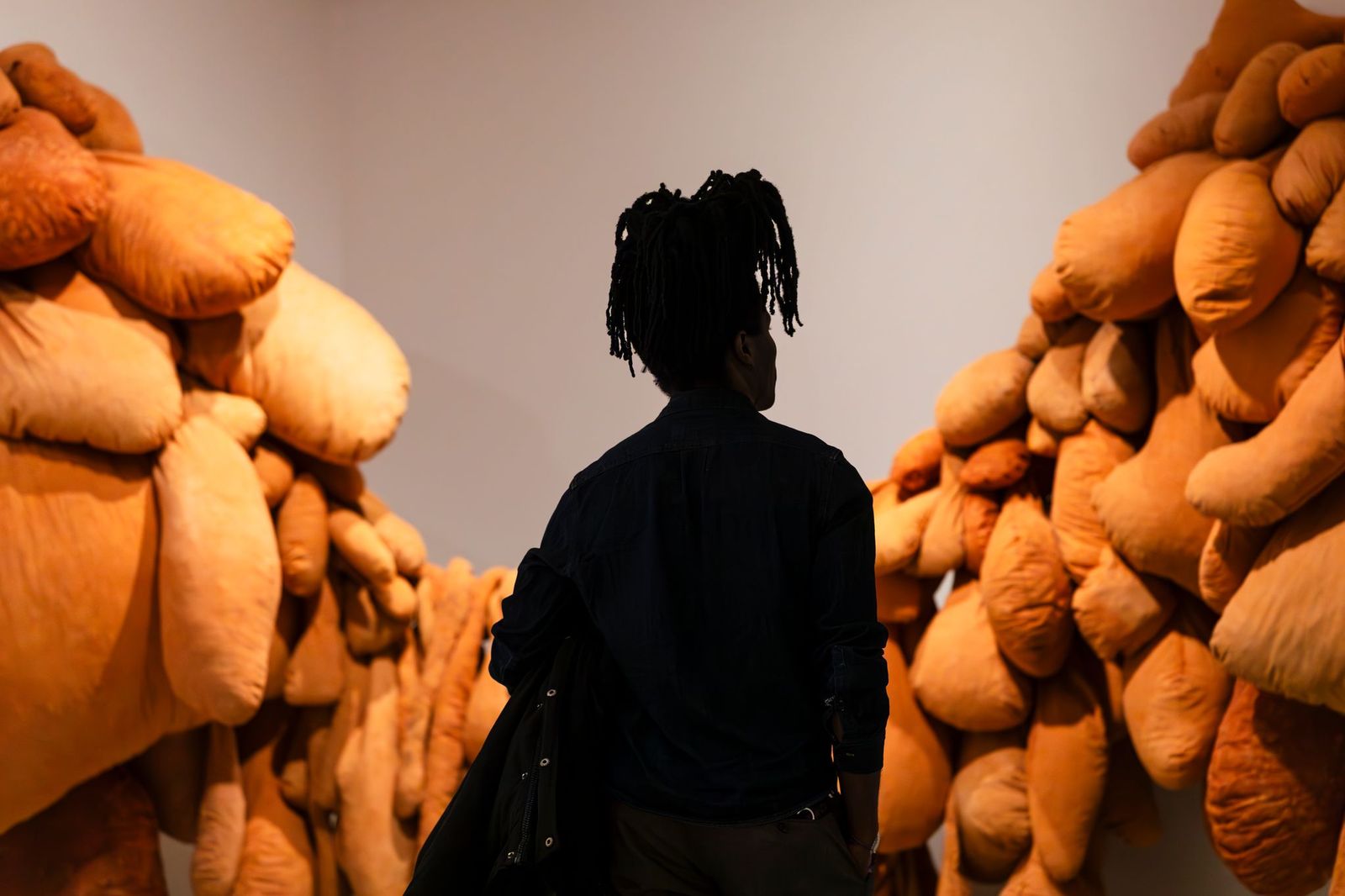
One thing that you would be sure not to miss, however, were the notable absences in the exhibition. On February 14th, the Barbican published a statement about their decision against hosting the London Review of Books (LRB) Winter Lecture Series, a choice made due to concerns around Pankaj Mishra's lecture “The Shoah after Gaza” and their ability to provide “dedicated and thoughtful care” (Barbican, February 2024) in considering the topic. This sparked significant controversy around artistic freedom and censorship, and various artists involved in Unravel: The Power and Politics of Textiles in Art withdrew their works in solidarity with Gaza.
In an exhibition about resistance, this could be seen as deeply ironic, or incredibly fitting. Johnson’s comments on the missing pieces were careful: “the absences in the show are incredibly powerful”, she says, and she recognises that “it was inevitable that this exhibition would become a space for conversation and dialogue”. The Barbican has made it clear that they “respect the decisions of those who have withdrawn their work” (Barbican, March 2024), and in referencing this issue throughout the exhibition when walls gaped with what-could-have-been, it does at least feel that the gallery has not shied away from representing the backlash to their decision. In any case, seeing the exhibition’s themes play out meta-contextually in real time certainly substantiates the focus on political power — here, we see textile art work holding real political, ideological significance even when it is nowhere to be seen.
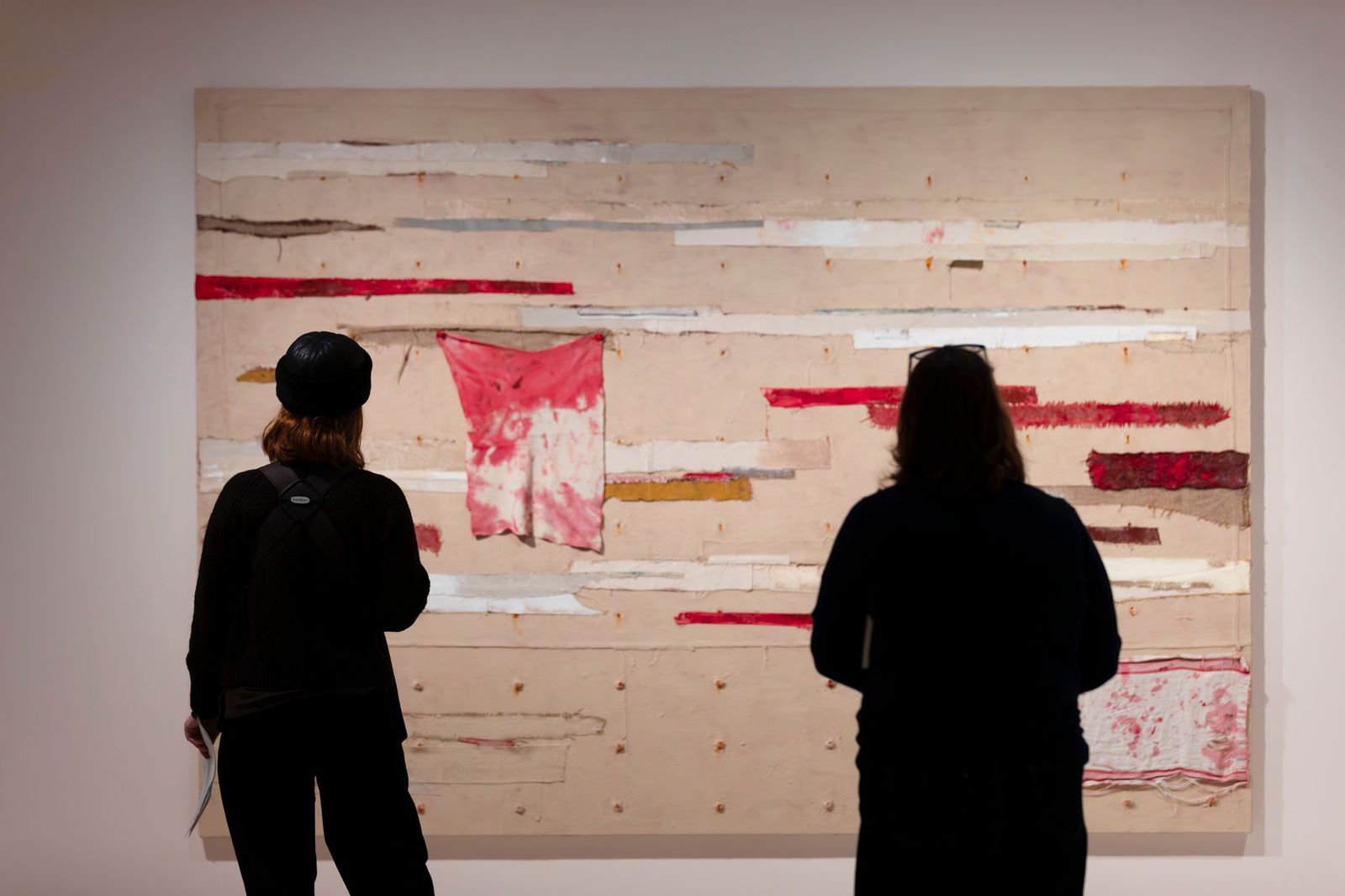
Across 50 artists’ diverse, individual works, we are shown the “immediate power of textiles to speak to personal and political experience” (Johnson) in a huge range of contexts. The urgency, constancy and relevance of the medium in our own lives is paired with the extraordinary methods and ideas of the creators involved, ultimately speaking to the importance of textiles not only as an artistic practice but as something to which we must pay more attention in our daily lives. Unravel: The Power and Politics of Textiles in Art is one to see.


